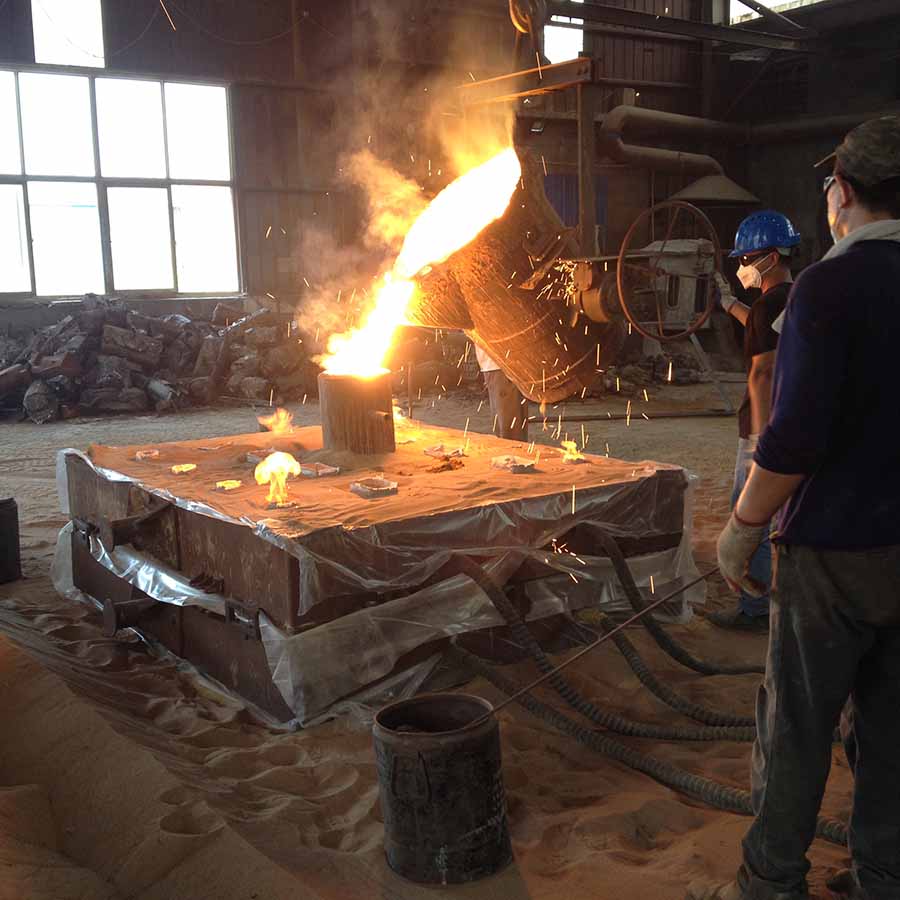In all the sand casting, shell mould casting or investment casting, a mould need to be prepared for each of the castings produced. For large-scale production, making a mould for every casting to be produced may be difficult and expensive. Therefore, a permanent mould, called die may be made from which a large number of castings, anywhere between 100 to 250 000 can be produced, depending on the alloy used and the complexity of the casting. This process called permanent mould casting or gravity diecasting, since the metal enters the mould under gravity.
The mould material is selected on the consideration of the pouring temperature, size of the casting and frequency of the casting cycle. They determine the total heat to be borne by the die. Fine-grained grey cast iron is the most generally used die material. Alloy cast iron, carbon steel and alloy steels (H11 and H14) are also used for very large volumes and large parts. Graphite moulds may be used for small volume production from aluminium and magnesium. The die life is less for higher melting temperature alloys such as copper or grey cast iron.
For making any hollow portions, cores are also used in permanent mould casting. The cores can be made out of metal or sand. When sand cores are used, the process is called semi-permanent moulding. The metallic core cannot be complex with undercuts and the like. Also, the metallic core is to be withdrawn immediately after solidification; otherwise, its extraction becomes difficult because of shrinkage. For complicated shapes, collapsible metal cores (multiple piece cores) are sometimes used in permanent moulds. Their use is not extensive because of the fact that it is difficult to securely position the core as a single piece as also due to the dimensional variations that are likely to occur. Hence, with collapsible cores, the designer has to provide coarse tolerance on these dimensions.
Under the regular casting cycle, the temperature at which the mould is used depends on the pouring temperature, casting cycle frequency, casting weight, casting shape, casting wall thickness, wall thickness of the mould and the thickness of the mould coating. If the casting is done with the cold die, the first few castings are likely to have misruns till the die reaches its operating temperature. To avoid this, the mould should be pre-heated to its operating temperature, preferably in an oven.
The materials which are normally cast in permanent moulds are aluminium alloys, magnesium alloys, copper alloys, zinc alloys and grey cast iron. The sizes of castings are limited to 15 kg in most of the materials. But, in case of aluminium, large castings with a mass of up to 350 kg have been produced. Permanent mould casting is particularly suited to high volume production of small, simple castings with uniform wall thickness and no intricate details.
Advantages of Permanent Mould Casting Components:
1. Because of the metallic moulds used, this proocess produces a fine-grained casting with superior mechanical properties
2. They produce very good surface finish of the order of 4 microns and better appearance
3. Close dimensional tolerances can be obtained
4. It is economical for large scale production as the labour involved in the mould preparation is reduced
5. Small-cored holes may be produced compared to sand casting
6. Inserts can be readily cast in place

 русский
русский



